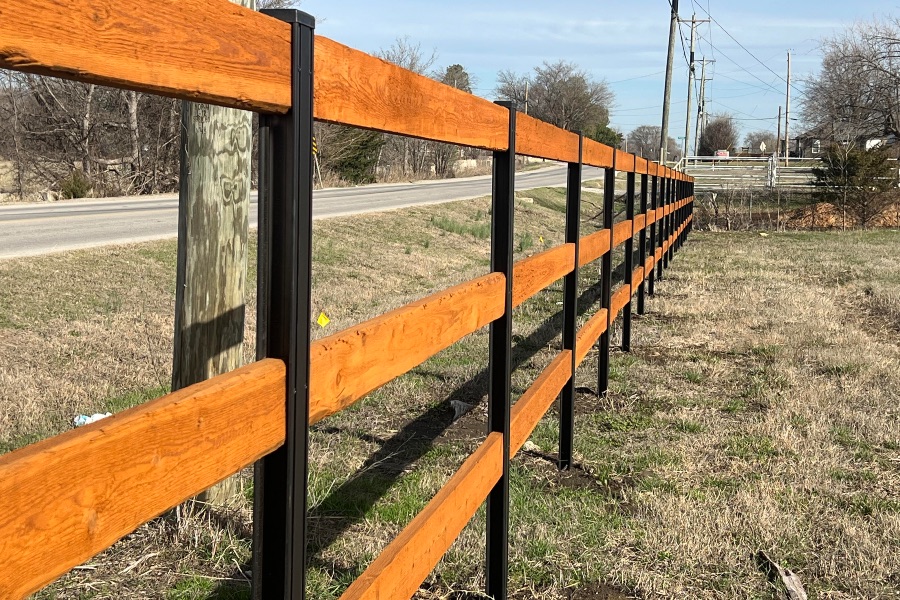All Categories
Featured

When taking into consideration installing a fencing on your residential or commercial property, one of the most vital actions is to comprehend whether you require an authorization. The specific permits called for can differ depending on your place, the type of fence you intend to mount, and the height or positioning of the fencing.
Why You Need a License for a Fencing Installation. The authorization procedure assists regional authorities verify that your fence does not conflict with web traffic presence, regard your residential property lines, or violate elevation constraints. Setting up a fence without an authorization can result in fines, removal of the fencing, or delays in building, so it's important to check whether a permit is required before starting your task.
Types of Permits You May Need. There are a couple of typical sorts of authorizations you might require for a fencing installation:
Structure Permit. A building authorization is one of the most usual license required for fence installments. This license makes certain that the fencing fulfills safety requirements and is created according to regional building regulations. A structure permit is normally needed if the fence goes beyond a specific height (commonly 6 feet), is made of certain products, or lies near a public pathway or road.
Zoning Permit. A zoning authorization may be required to confirm that your fence adheres to neighborhood zoning legislations. Zoning guidelines can dictate where a fencing can be positioned on your residential property, just how high it can be, and whether it is allowed specific areas (such as along residential or commercial property lines or in front yards) As an example, some towns have guidelines limiting the elevation of fencings in the front backyard to make sure visibility for motorists and pedestrians.

Obstacle Permit. You might need a problem authorization if you are building a fencing near your building line or close to a road. A problem describes the distance a structure, consisting of fences, must be from the residential or commercial property line. Obstacle guidelines vary by area, and guaranteeing that your fence is placed properly can protect against disputes with next-door neighbors and prevent infractions.
Homeowner Organization (HOA) Authorization. If you stay in a community regulated by a Homeowner's Organization (HOA), you might require approval from them along with local licenses. HOA regulations usually cover the sort of materials, height, style, and color of fences. Also if your neighborhood government does not call for a license, your HOA may still have specific guidelines that require to be adhered to.
Just How to Look For a Fencing Authorization. To apply for a fencing permit, you'll need to contact your regional structure department or planning office. The application process commonly entails filling up out a type, paying a charge, and sending a website strategy of your residential or commercial property that reveals the proposed place of the fence. You might additionally need to consist of information regarding the products, height, and style of the fencing.
Sometimes, a neighborhood official might require to inspect your residential property prior to approving the authorization. As soon as the permit is given, you will certainly be authorized to wage your fence installment.
When Is an Authorization Not Required? In particular situations, a permit might not be required. These scenarios can include:
Low Elevation Fences: In many locations, fences that are below a particular height (frequently 3 to 4 feet) may not require a permit, particularly if they are positioned in the yard or various other non-visible areas.
Fencing Substitute: If you're replacing an existing fence with the same elevation and product, some locations may not call for a brand-new authorization.
Non-Obtrusive Fences: Momentary or decorative fences, such as those used for gardening or landscaping objectives, might not need authorizations as long as they are not irreversible and low.
Nevertheless, it is essential to talk to your regional zoning office or building department, as policies can vary by jurisdiction.
Repercussions of Not Obtaining a Permit. Failing to obtain the essential authorizations can lead to substantial consequences. These consist of fines, forced removal of the fence, and even delays in building and construction. Furthermore, if your fence does not fulfill regional laws, you can deal with legal concerns with next-door neighbors or local authorities.

Final thought. By guaranteeing that you comply with neighborhood regulations and acquire the needed authorizations, you can ensure and prevent pricey errors that your fence is legitimately compliant. Inspect with your regional building department, HOA, and zoning office to establish what authorizations are needed for your certain fence job.
Latest Posts
Smooth Aluminum Seamless Gutters: The Smart Choice for Your Home
Published May 26, 25
1 min read
Join WyHy FCU – Top Benefits for Your Money Goals
Published May 26, 25
1 min read
Learn Why Chicago Drivers Prefer Montclare Auto Repair for Reliable Service and Huge Savings
Published May 25, 25
1 min read
More
Latest Posts
Smooth Aluminum Seamless Gutters: The Smart Choice for Your Home
Published May 26, 25
1 min read
Join WyHy FCU – Top Benefits for Your Money Goals
Published May 26, 25
1 min read
Learn Why Chicago Drivers Prefer Montclare Auto Repair for Reliable Service and Huge Savings
Published May 25, 25
1 min read